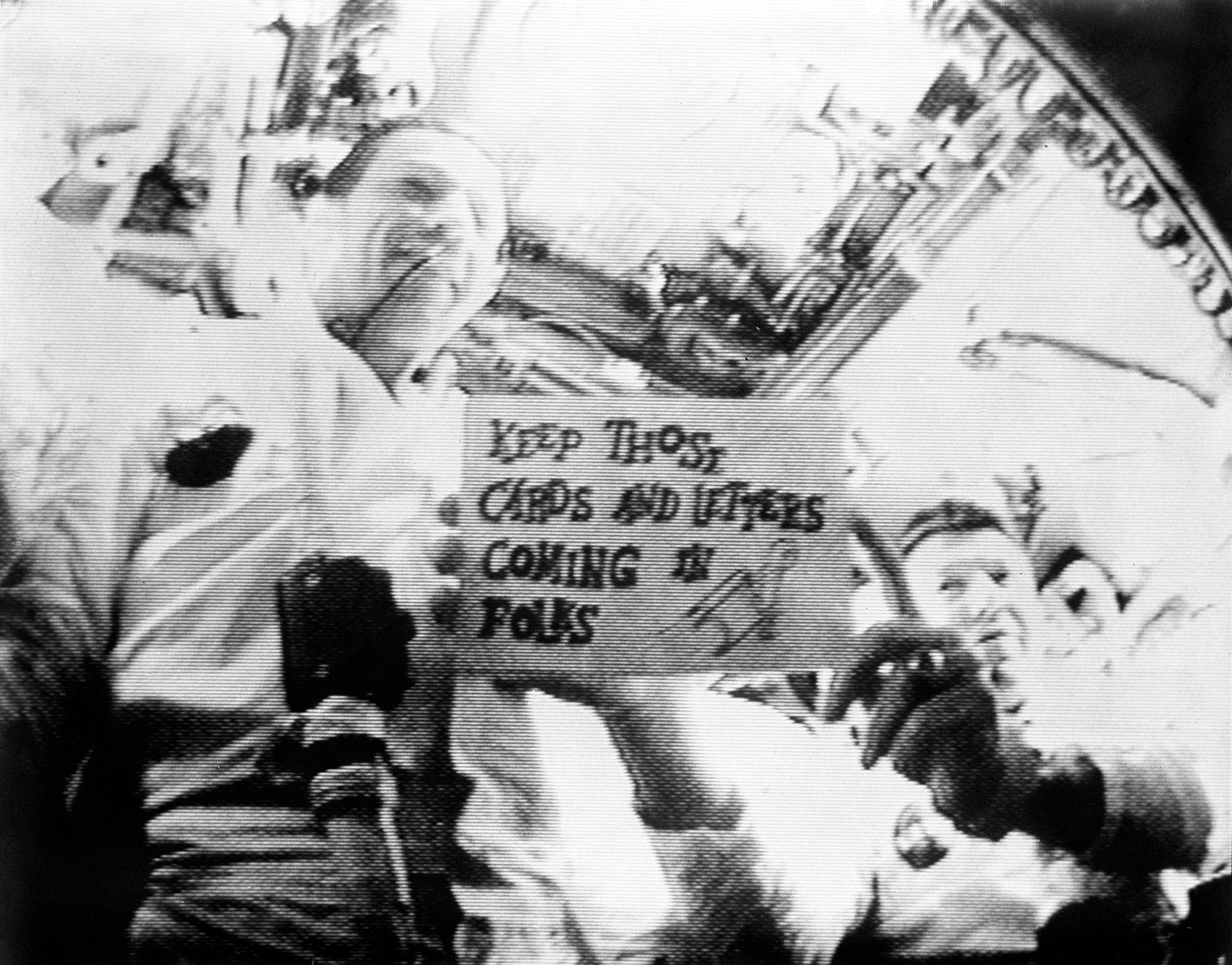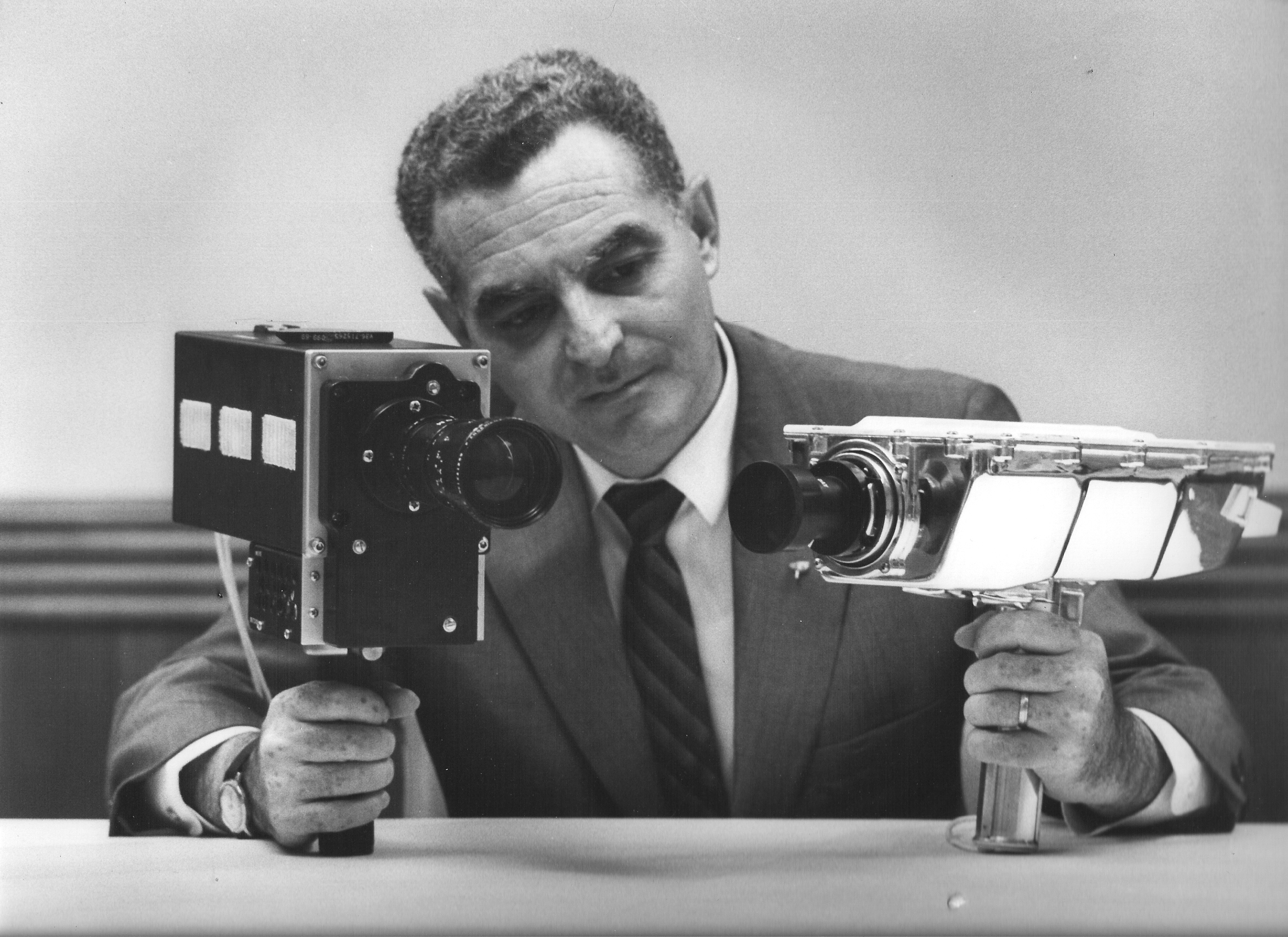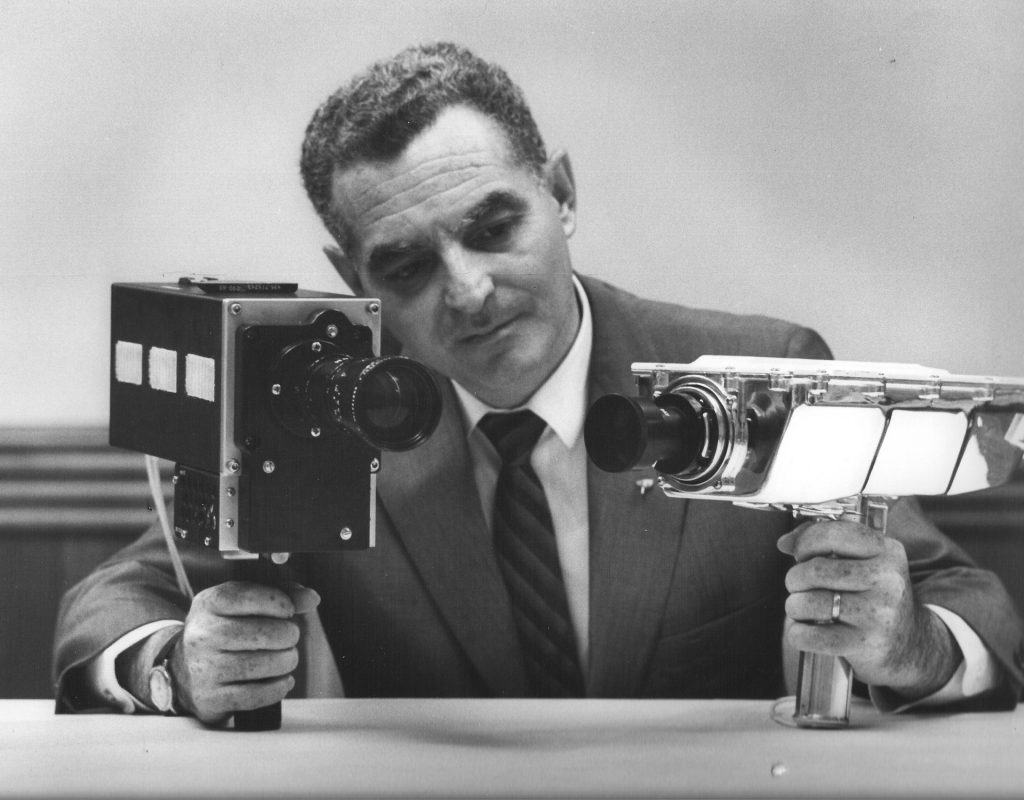In July of 2019 it will be fifty years since man first set foot on the earth’s only natural satellite. On July 20th it would also be the most viewed event in television’s brief history as Neil Armstrong stepped off the Lunar Module onto the dusty surface of the Sea of Tranquility.
It was an extraordinary experience for the estimated 600 million people watching. Even Russia, the Cold War adversary still in competition with the United States, pirated the Eurovision feed and fed it throughout the Union of Soviet Socialist Republics (U.S.S.R).
That everyone was watching it happen live was also an awesome technical achievement yet to be topped to this day.
But the live visuals almost didn’t happen! From the mission planners at the National Aeronautics and Space Administration (NASA) to electrical contractors in Australia, many hurdles had to be confronted and worked out before the live images of the man’s landing on the moon could appear on television screens worldwide.
Incredibly, NASA had initially seen ‘no reason’ for any television pictures! It was argued in many meetings that a live television camera would take up too much space and weight to the spacecraft. It was also considered a distraction. Since it would provide doubtful scientific value to the mission it was therefore not initially considered as a high priority.
Taking pictures from space was nothing new for NASA. They had still cameras on every mission from the initial Mercury program, through Gemini and forward into Apollo. In those early days, film based motion picture cameras were stop motion and filled a diagnostic or research function. Their primary views were to assess the condition of the astronaut.
However, as early as John Glenn’s first orbital flight, a camera operated by one of the astronauts was brought on board as an afterthought. A camera “…was purchased in a local drug store and hastily modified so the astronaut could use it more easily while in his pressure suit… Photography was deemed nothing more than a recreational extra.”
NASA experimented with live television on one Mercury flight. Gordon Cooper’s Faith 7 had a camera aimed at him that was used for evaluation purposes. The Faith 7 camera transmitted one frame every two seconds, with a resolution of 320 lines. Also, the camera (with ancillary devices) weighed 17lbs. and consumed 56 watts during operation. NASA’s post flight report states “the quality and usefulness of its transmissions were not satisfactory.”
It wasn’t until Apollo 7 launched in October of 1968 that live video finally came on board successfully but only in the Command Module. In the initial phases of the mission, spacecraft commander of Apollo 7, Walter Schirra, nixed using the camera citing the workload they had been assigned and getting familiar with the redesigned spacecraft. But the next day the camera was brought out and it was obvious the crew had planned ahead even bringing out prepared cards for the entertainment of their “audience.” “Keep those cards and letters coming in, folks!” and “Hello from the lovely Apollo room high atop everything.”

Both Apollo 7 and Apollo 8 used a “Slow-scan” camera from RCA in the Command Module (CM). The engineers had to make the signal fit on the telemetry transmissions known as Apollo’s Unified S-Band system. Because they were not able to spare much space on it, they were forced down to 500 kiloHertz bandwidth resulting in a resolution of 320 lines at 10 frames per second, a third of what normal television operates at (Broadcast television at the time was using 6 megaHertz). NASA refers to this as Slow Scan Television (SSTV).
To convert the feeds to NTSC (the signals that television stations would be able to transmit), RCA built converters that utilized new experimental metal discs to record the scans and extend the output so it matched the NTSC rate of 30 frames a second. The units converted it to a usable broadcast signal by re-photographing it using an RCA TK-22 camera. The metal discs later gained wide acceptance in the sports production arena and became known as the first “instant replay” machines.
At the beginning of 1969, the presence of a lunar surface camera to be carried to the moon in the Lunar Module still had not yet been resolved.
According to BBC’s “Sky at Night” magazine, “…just months before launch, an emergency meeting – attended by every manager and a massive audience – saw ‘old timers’ fight for an additional TV camera.”
In January the meeting was held and according to Stanley Lebar’s interview with James O’Neal for TV Technology, “It was a big meeting – all the sub-system people were there, and all of the astronauts.”
The ‘old timers’ won. A second camera would be taken along with the astronauts. Television would be taken to the moon and the general public would be able to watch man take the first steps onto the lunar surface.
Lebar’s company, Westinghouse, had been awarded the job of designing and building a small, lightweight camera to NASA specifications (Both the major commercial television companies, RCA and General Electric did not have a camera pick-up tube that would satisfy NASA’s deep space requirements). The Lunar camera manual can be found on this NASA website.
There was no Command Module camera on Apollo 9 launched March 3, 1969. Instead, NASA sent the new Westinghouse lunar surface camera up to do the tests of it in the Lunar Module (LM). Westinghouse provided a cable long enough to handle both spacecraft. Once the LM was jettisoned from the Command ship the camera went with it. The LM had to be jettisoned to make the command vehicle ready for the return to earth. It was the only test of the Lunar camera prior to Apollo 11.

On Apollo 10, NASA introduced a color camera for the CM. Like the smaller black and white Lunar unit, it was built by Westinghouse and was an update of the recalled CBS color standard (created by Dr. Peter Goldmark) approved by the FCC in 1950. As Stan Lebar explains it, the basically black and white camera had a small color wheel attached in front of the pickup tube. The tube was a development from the Vietnam war allowing very low light levels to make it easier to search for downed pilots.
When Lebar notified NASA he had successfully tested the camera, he was told to take it to the Goddard facility in Greenbelt, Maryland, and operate it. Houston set up a line with Goddard so they could evaluate it. Lebar says the best he could do on short notice was to use multicolored inflated toy balloons. The demo was a success. Tom Stafford, commander of Apollo 10, was a fan of the color camera. He “wanted people in the program and the American people to know how beautiful space was.”
With the Apollo 10 launch looming ever closer, Stafford wanted to get the color camera to the capsule and have it checked out before close out. On the “Live from the Moon” documentary, Lebar tells the story of how Stafford put the camera in his car, drove out to the pad, took it up the elevator and gave it to the team. When Stafford gave them the camera he said, “Here’s the television camera we’re going to carry. Test it for space and stow it.”
During the flight, Lebar watched the first use of the camera in the TV Pool control room wanting to know what the engineers, producers and directors thought of it. After a color close up of the astronauts they turned to him and gave him two thumbs up.
After Apollo 10 the Westinghouse color unit was made standard Command Module equipment on all future Apollo missions. But the Lunar lander camera did not fly on Apollo 10 since the LM was only going to be tested in flight over the moon and would not land. The LM had to be jettisoned to enable the CM to splashdown.
Regarding color, Richard Nafzger, Apollo Television Engineer, said, “We wished we could have [color] on the lunar landing but [black and white] was already set.” The lunar camera would need more time to work out the power and bandwidth issues. For the time being, the moon would have to remain in black and white for the first moon landing. Color for the LM would come later with Apollo 12.
Most of the moon’s downlink would be received in Australia. Nafzger related a story about the LM’s SSTV converter at the Overseas Telecommunications Commissions’ International Exchange in Sydney (referred to in the network as Sydney Video). Both Parkes and Honeysuckle Creek downlinks were microwaving their signals to Sydney. Honeysuckle had its own scan converter and was sending NTSC video directly. Parkes, however, was sending their SSTV footage to the scan converter in Sydney for conversion there.
A few weeks before the Apollo 11 launch, the Navy brought in an American standard power generator and wired it up. Australia power runs on 50 cycle/240 volts and the converter required American standard 60 cycle/110 volts. The team at Sydney Video had it running and was using it. When the weekend came, they shut down and on the morning they returned back from the weekend, they turned on the unit and got nothing but popping noises and smoke coming out of it!
It turns out someone over the weekend had noticed the wires weren’t run properly for an Australian installation and rewired to correct the “error.” Immediate calls to RCA in Camden, NJ, brought about $100,000 worth of equipment and several technicians to put the box right again.
https://youtu.be/UExTN3_UOIY
Finally, on July 16th, 1969, Apollo 11 took off with two television cameras. One was the black and white one aboard the Lunar Module (tested on Apollo 9 – 6.5 watts and providing pictures in the slow scan rate). The LM, as discussed, was severely limited in its weight and bandwidth restrictions and had to be able to transmit the 500 kHz signal through the NASA S-band system. But the color camera on the Command Module (tested on Apollo 10 – 17.5 watts with a full 525 line signal) had adequate power to send back an NTSC signal in field sequential color (using 2 to 3 MHz bandwidth).
Only one color converter setup was installed for the network and that was at the Manned Space Craft Center. All Command Module video was sent back to Houston to this one color converter. It was modified to feed the combination of red, green and blue filters as a complete color image before outputting it as NTSC commercial video.
Once on the moon, Neil Armstrong descended the ladder. Before he started down, he pulled the cord to release the Modular Equipment Storage Area (MESA) that opened up a hole for the TV camera to shoot through. Once he got confirmation the TV was working, he continued down the steps.
https://youtu.be/CtwSgvstl8c
At this time, there were three tracking stations either in range or coming in range to receive Apollo 11’s weak signal from the moon. Had the astronauts followed the schedule, it probably would have been the 210 foot dish at Parkes from the beginning. However, the astronauts elected not to sleep but venture out onto the lunar surface. Houston gave them the go ahead. So Goldstone’s 210 foot dish was going to get the initial downlink.

The ground almost missed the first footsteps. Because the astronauts wanted to get to work right away, there were only two dishes in site of the landing position – Goldstone Tracking and Honeysuckle Creek’s 85 foot dish. Both had a good signal but in the case of Goldstone, the picture was upside down and got very high contrast. The site was having problems with their conversion scanner and was not ready. Parkes, the 210 foot dish, had to wait for the moon to rise into its footprint. It could not achieve a horizon line lower than 30 degrees above the true horizon. Only Honeysuckle was immediately waiting when Aldrin turned on the camera circuit breaker from inside the LM. Listening to the ground reroute the signal, one gets to hear them trying to get the best picture. As Armstrong steps off the LM’s footpad, it is Honeysuckle Creek providing the best picture.
As Goldstone moves off the path, the Parkes’ dish comes into view of the moon and they start receiving a signal. However, at the same time, the winds start to kick up and the Parkes personnel start monitoring the alarms. But the dish remains on target and at Sydney Video, Charlie Goodman asks Houston if he should switch the better signal from Parkes. “Please be advised I have a very good picture from Parkes, shall I give it to you?” Houston tells him to take Parkes and as soon as he does Houston says “Roger, beautiful picture, thank you! All stations we are switching to Parkes at this time.” After the moon walk is over, Houston radios “You might pass on to the Parkes people that their labor was not in vain, they’ve given us the best TV yet.”
Many of you, if you have seen the movie “The Dish,” may have noticed how closely this resembles what actually happened. Even to the winds kicking up as they moved the dish into position.
Sydney Video sent the selected feed to the Moree earth station and up to the Intelsat III Pacific satellite. That signal was received at the Jamesburg, California, earth station who in turn relayed it to Mission Control in Houston. With no reason to stop the information flow, Houston immediately relayed it to the world’s press and media.
Parkes and Goldstone are still on the network. But Honeysuckle Creek was dismantled in 1981. Economics and Honeysuckle’s isolated location necessitated changes and the dish was moved to the Deep Space Station at Tidbinbilla, Australia. Today, a park covers the grounds that used to be this Deep Space Station site. See the pictures that honor the point that brought the sight of man’s first steps on the moon to the rest of plant earth.
Looking back from 2019, everyone over a certain age can remember where they were and what they were doing when man made his first steps on the moon. As Dr. Eric Jones (observing at the time of Apollo 8) marveled, “Eight years earlier, flights to the moon were science fiction and here we were in our living rooms watching the lunar surface go by underneath us.”

Filmtools
Filmmakers go-to destination for pre-production, production & post production equipment!
Shop Now













